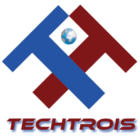Software development, a dynamic field constantly evolving with technological advancements, is witnessing a myriad of trends shaping its landscape. In this article, we delve into the latest trends in software development from a US perspective. Latest Technology News, Innovations, and Updates highlighting the innovations driving change and transformation.
Introduction to Latest Trends in Software Development
In today’s digital age, businesses across the United States are leveraging technology to streamline operations. Enhance customer experiences, and gain a competitive edge. As a result, software development is undergoing a paradigm shift, marked by the emergence of latest trends that redefine traditional practices.
Emergence of Low-Code and No-Code Platforms
One notable trend revolutionizing software development is the rise of low-code and no-code platforms. These platforms empower individuals with limited coding experience to develop robust applications through visual interfaces and pre-built components. In the US, organizations are increasingly embracing these platforms to accelerate development cycles, reduce costs, and foster innovation.
Adoption of Artificial Intelligence and Machine Learning
Artificial Intelligence (AI) and Machine Learning (ML) are at the forefront of software development trends. Driving intelligent automation and predictive analytics. In the US, companies are integrating AI and ML capabilities into their applications. That enhance decision-making processes, personalize user experiences, and automate repetitive tasks, thereby boosting efficiency and productivity.
Focus on Cybersecurity
With the escalating threat of cyberattacks, cybersecurity has become paramount in software development. US-based companies are prioritizing robust security measures, such as encryption, multi-factor authentication, and vulnerability assessments. These measures helps safeguard sensitive data and mitigate risks associated with cyber threats.
Shift towards Cloud-Native Development
Cloud-native development is gaining traction in the US software industry. Enabling organizations to build and deploy applications seamlessly across cloud environments. By leveraging cloud-native technologies like containers and microservices. Businesses can achieve scalability, resilience, and agility, thereby accelerating time-to-market and optimizing resource utilization.
Rise of DevOps Practices
DevOps, a culture of collaboration between development and operations teams, is reshaping software development methodologies in the US. By fostering continuous integration, delivery, and deployment, DevOps practices enable faster innovation cycles, improved software quality, and enhanced customer satisfaction, driving digital transformation across industries.
Importance of User Experience Design
User Experience (UX) design plays a pivotal role in the success of software applications, influencing user engagement and retention. US-based companies are investing in intuitive UX design principles, such as user-centered design, accessibility, and responsive interfaces, to deliver seamless and immersive experiences across devices and platforms.
Incorporating Blockchain Technology
Blockchain technology is disrupting various sectors, including finance, healthcare, and supply chain, with its decentralized and immutable ledger system. In the US, software developers are exploring blockchain applications, such as smart contracts and decentralized finance (DeFi), to enhance transparency, security, and trust in digital transactions.
Mobile-First Development Approach
With the proliferation of smartphones and mobile devices, adopting a mobile-first development approach has become imperative for US businesses. By prioritizing mobile responsiveness and performance optimization, companies can cater to the growing demand for mobile applications, reaching a broader audience and maximizing user engagement.
Embracing Progressive Web Apps (PWAs)
Progressive Web Apps (PWAs) combine the best features of web and mobile applications, offering users a seamless experience across devices. In the US, businesses are embracing PWAs to deliver fast-loading, offline-capable, and installable web experiences, enhancing accessibility and engagement without the need for app stores.
Impact of Internet of Things (IoT)
The Internet of Things (IoT) ecosystem is expanding rapidly, connecting devices and enabling data-driven insights in various domains. In the US, software developers are leveraging IoT technologies to create innovative solutions for smart homes, healthcare monitoring, industrial automation, and more, driving efficiency and innovation in interconnected systems.
Software Development for Augmented Reality (AR) and Virtual Reality (VR)
Augmented Reality (AR) and Virtual Reality (VR) are revolutionizing user experiences, offering immersive and interactive environments for gaming, education, training, and marketing. In the US, software developers are harnessing AR and VR technologies to create compelling applications that blur the line between the physical and digital worlds, unlocking new possibilities for entertainment and enterprise solutions.
Integration of Quantum Computing
Quantum computing, with its potential for exponential processing power, holds promise for solving complex problems beyond the capabilities of classical computers. In the US, research institutions and technology companies are exploring quantum computing applications in areas such as cryptography, optimization, and drug discovery, paving the way for groundbreaking advancements in software development.
Trends in Cross-Platform Development
Cross-platform development frameworks, such as React Native and Flutter, are gaining popularity among US developers for building applications that run seamlessly across multiple platforms. By leveraging shared codebases and native-like performance, cross-platform development enables cost-effective and efficient app development, catering to diverse user preferences and device ecosystems.
Conclusion: Embracing Innovation in Software Development
In conclusion, the landscape of software development in the United States is undergoing a transformative evolution, driven by innovative trends that redefine conventional practices and foster technological advancement. By embracing these trends, businesses can stay ahead of the curve, unlock new opportunities, and deliver impactful solutions that propel growth and innovation in the digital era.
FAQs
- What are low-code and no-code platforms, and how are they transforming software development?
- How is artificial intelligence shaping the future of software development in the US?
- What measures are US-based companies taking to enhance cybersecurity in software development?
- What are the key benefits of adopting DevOps practices in software development?
- How are progressive web apps (PWAs) revolutionizing the mobile experience for users in the US?



